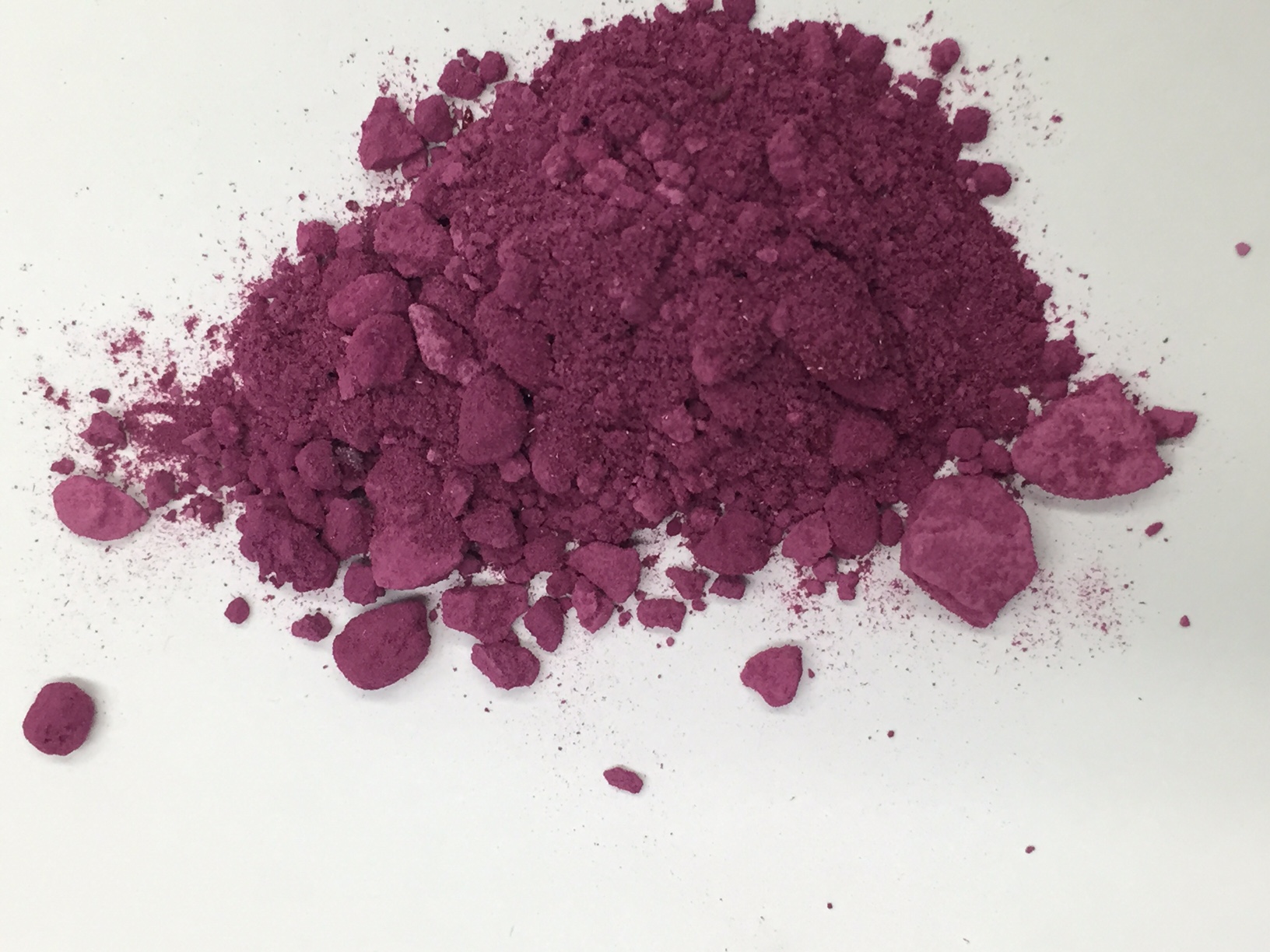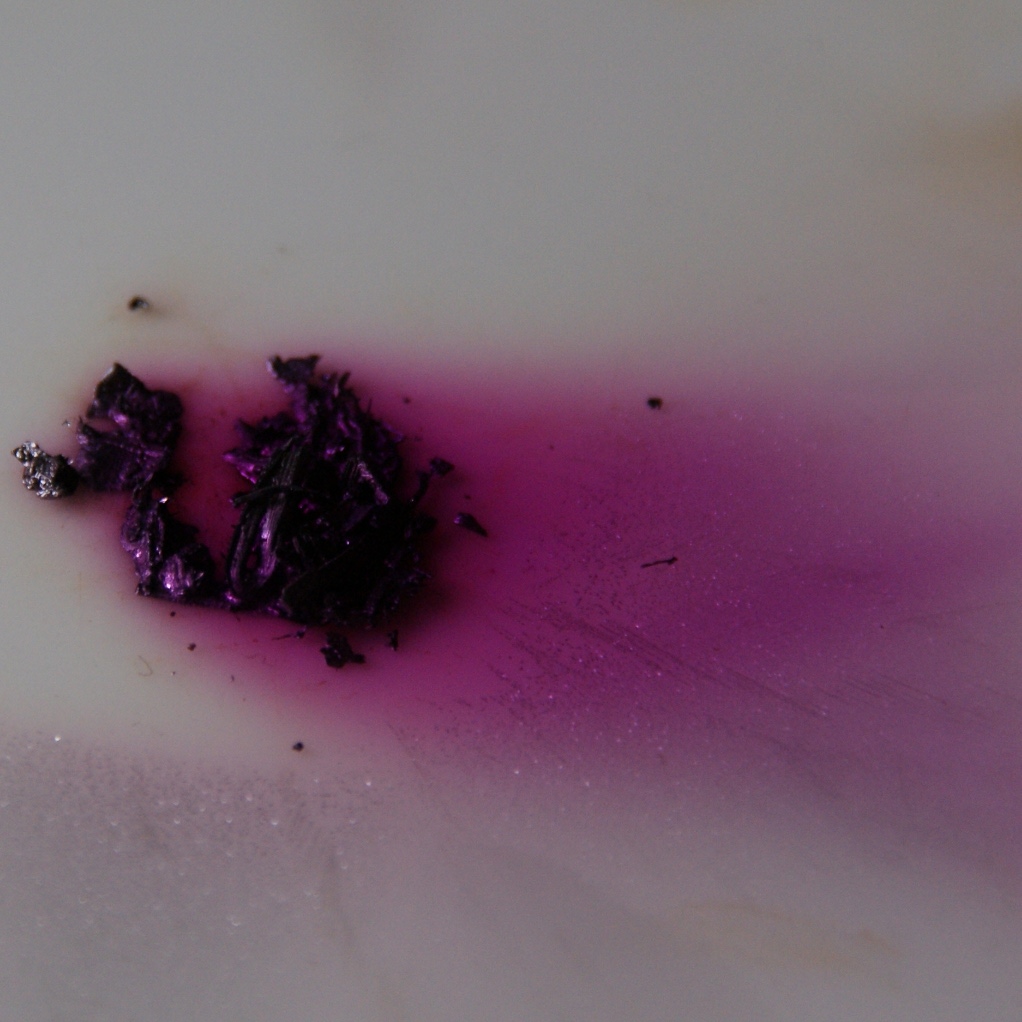|
Magnus's Green Salt
Magnus's green salt is the inorganic compound with the chemical formula, formula [Pt(NH3)4][PtCl4]. This salt is named after Heinrich Gustav Magnus, who, in the early 1830s, first reported the compound. The compound is a linear chain compound, consisting of a chain of platinum atoms. It is dark green, which is unusual for platinum compounds. Structure This species has attracted interest in Materials science, materials chemistry and solid-state physics because of its one-dimensional structure. It contains a chain of alternating [PtCl4]2− anions and [Pt(NH3)4]2+ cations, in which the platinum atoms are separated by 3.25 Å. It is a semiconductor. Preparation The compound may be prepared by combining aqueous solutions of [Pt(NH3)4]2+ and [PtCl4]2−, which gives a deep green solid precipitate. Under some conditions, this reaction affords a pink Polymorphism (materials science), polymorph of Magnus's green salt. In this so-called "Magnus's pink salt", the square planar Pt comple ... [...More Info...] [...Related Items...] OR: [Wikipedia] [Google] [Baidu] |
Inorganic Compound
An inorganic compound is typically a chemical compound that lacks carbon–hydrogen bondsthat is, a compound that is not an organic compound. The study of inorganic compounds is a subfield of chemistry known as ''inorganic chemistry''. Inorganic compounds comprise most of the Earth's crust, although the compositions of the deep Mantle (geology), mantle remain active areas of investigation. All allotropes (structurally different pure forms of an element) and some simple carbon compounds are often considered inorganic. Examples include the allotropes of carbon (graphite, diamond, buckminsterfullerene, graphene, etc.), carbon monoxide , carbon dioxide , carbides, and salt (chemistry), salts of inorganic anions such as carbonates, cyanides, cyanates, thiocyanates, isothiocyanates, etc. Many of these are normal parts of mostly organic systems, including organisms; describing a chemical as inorganic does not necessarily mean that it cannot occur within life, living things. History ... [...More Info...] [...Related Items...] OR: [Wikipedia] [Google] [Baidu] |
Potassium Tetrachloroplatinate
Potassium tetrachloroplatinate(II) is the chemical compound with the chemical formula, formula K2PtCl4. This reddish orange salt (chemistry), salt is an important reagent for the preparation of other Complex (chemistry), coordination complexes of platinum. It consists of potassium cations and the square planar dianion . Related salts are also known including , which is brown-colored and soluble in alcohols, and Quaternary ammonium cation, quaternary ammonium salts, which are soluble in a broader range of organic solvents. Preparation Potassium tetrachloroplatinate is prepared by reduction of potassium hexachloroplatinate, the corresponding hexachloroplatinate salt with sulfur dioxide. K2PtCl4 is one of the salts that is most easily obtained from platinum ores. The complex is appreciably soluble only in water. Treatment with alcohols, especially in the presence of base, causes reduction to platinum metal. Organic tetrachloroplatinate salts, such as [PPN]2PtCl4 are soluble in ... [...More Info...] [...Related Items...] OR: [Wikipedia] [Google] [Baidu] |
Ammine Complexes
In coordination chemistry, metal ammine complexes are metal complexes containing at least one ammonia () ligand. "Ammine" is spelled this way for historical reasons; in contrast, alkyl or aryl bearing ligands are spelt with a single "m". Almost all metal ions bind ammonia as a ligand, but the most prevalent examples of ammine complexes are for Cr(III), Co(III), Ni(II), Cu(II) as well as several platinum group metals.A. von Zelewsky "Stereochemistry of Coordination Compounds" John Wiley: Chichester, 1995. . History Ammine complexes played a major role in the development of coordination chemistry, specifically determination of the stereochemistry and structure. They are easily prepared, and the metal-nitrogen ratio can be determined by elemental analysis. Through studies mainly on the ammine complexes, Alfred Werner developed his Nobel Prize-winning concept of the structure of coordination compounds (see Figure). Originally salts of [Co(NH3)6]3+ were described as the ''luteo'' (Lat ... [...More Info...] [...Related Items...] OR: [Wikipedia] [Google] [Baidu] |
Metal Halides
Metal halides are compounds between metals and halogens. Some, such as sodium chloride are Ionic compound, ionic, while others are covalently bonded. A few metal halides are discrete molecules, such as uranium hexafluoride, but most adopt polymeric structures, such as palladium chloride. File:NaCl polyhedra.svg, Sodium chloride crystal structure File:Uranium-hexafluoride-unit-cell-3D-balls.png, Discrete UF6 molecules File:Alpha-palladium(II)-chloride-xtal-3D-balls.png, Infinite chains of one form of palladium chloride Preparation The halogens can all react with metals to form metal halides according to the following equation: :2M + nX2 → 2MXn where M is the metal, X is the halogen, and MXn is the metal halide. In practice, this type of reaction may be very exothermic, hence impractical as a preparative technique. Additionally, many transition metals can adopt multiple oxidation states, which complicates matters. As the halogens are strong oxidizers, direct combination of th ... [...More Info...] [...Related Items...] OR: [Wikipedia] [Google] [Baidu] |
Platinum(II) Compounds
Platinum is a chemical element; it has symbol Pt and atomic number 78. It is a dense, malleable, ductile, highly unreactive, precious, silverish-white transition metal. Its name originates from Spanish , a diminutive of "silver". Platinum is a member of the platinum group of elements and group 10 of the periodic table of elements. It has six naturally occurring isotopes. It is one of the rarer elements in Earth's crust, with an average abundance of approximately 5 μg/kg, making platinum about 30 times rarer than gold. It occurs in some nickel and copper ores along with some native deposits, with 90% of current production from deposits across Russia's Ural Mountains, Colombia, the Sudbury basin of Canada, and a large reserve in South Africa. Because of its scarcity in Earth's crust, only a few hundred tonnes are produced annually, and given its important uses, it is highly valuable as well as a major precious metal commodity. Platinum is one of the least reactive ... [...More Info...] [...Related Items...] OR: [Wikipedia] [Google] [Baidu] |
Metal Ammine Complex
In coordination chemistry, metal ammine complexes are metal complexes containing at least one ammonia () ligand. "Ammine" is spelled this way for historical reasons; in contrast, alkyl or aryl bearing ligands are spelt with a single "m". Almost all metal ions bind ammonia as a ligand, but the most prevalent examples of ammine complexes are for Cr(III), Co(III), Ni(II), Cu(II) as well as several platinum group metals.A. von Zelewsky "Stereochemistry of Coordination Compounds" John Wiley: Chichester, 1995. . History Ammine complexes played a major role in the development of coordination chemistry, specifically determination of the stereochemistry and structure. They are easily prepared, and the metal-nitrogen ratio can be determined by elemental analysis. Through studies mainly on the ammine complexes, Alfred Werner developed his Nobel Prize-winning concept of the structure of coordination compounds (see Figure). Originally salts of o(NH3)6sup>3+ were described as the ''luteo'' (L ... [...More Info...] [...Related Items...] OR: [Wikipedia] [Google] [Baidu] |
Louis Nicolas Vauquelin
Louis Nicolas Vauquelin FRS(For) HFRSE (; 16 May 1763 – 14 November 1829) was a French pharmacist and chemist. He was the discoverer of chromium and beryllium. Early life Vauquelin was born at Saint-André-d'Hébertot in Normandy, France, the son of Nicolas Vauquelin, an estate manager, and his wife, Catherine Le Charterier. His first acquaintance with chemistry was gained as laboratory assistant to an apothecary in Rouen (1777–1779), and after various vicissitudes he obtained an introduction to A. F. Fourcroy, in whose laboratory he was an assistant from 1783 to 1791. Moving to Paris, he became a laboratory assistant at the Jardin du Roi and was befriended by a professor of chemistry. In 1791 he was made a member of the Academy of Sciences and from that time he helped to edit the journal '' Annales de Chimie'' ''(Chemical annals)'', although he left the country for a while during the height of the French Revolution. In 1798 Vauquelin discovered beryllium oxide by extrac ... [...More Info...] [...Related Items...] OR: [Wikipedia] [Google] [Baidu] |
Trans Effect
In inorganic chemistry, the trans effect is the increased Lability#Chemistry, lability of ligands that are Cis-trans isomerism#Inorganic coordination complexes, trans to certain other ligands, which can thus be regarded as trans-directing ligands. It is attributed to electronic effects and it is most notable in square planar Complex (chemistry), complexes, although it can also be observed for octahedral complexes. The analogous cis effect is most often observed in octahedral transition metal complexes. In addition to this ''kinetic trans effect'', trans ligands also have an influence on the ground state of the molecule, the most notable ones being bond lengths and stability. Some authors prefer the term trans influence to distinguish it from the kinetic effect, while others use more specific terms such as structural trans effect or thermodynamic trans effect. The discovery of the trans effect is attributed to Ilya Ilich Chernyaev, who recognized it and gave it a name in 1926. Kine ... [...More Info...] [...Related Items...] OR: [Wikipedia] [Google] [Baidu] |
Ligand
In coordination chemistry, a ligand is an ion or molecule with a functional group that binds to a central metal atom to form a coordination complex. The bonding with the metal generally involves formal donation of one or more of the ligand's electron pairs, often through Lewis acids and bases, Lewis bases. The nature of metal–ligand bonding can range from covalent bond, covalent to ionic bond, ionic. Furthermore, the metal–ligand bond order can range from one to three. Ligands are viewed as Lewis bases, although rare cases are known to involve Lewis acids and bases, Lewis acidic "ligands". Metals and metalloids are bound to ligands in almost all circumstances, although gaseous "naked" metal ions can be generated in a high vacuum. Ligands in a complex dictate the reactivity (chemistry), reactivity of the central atom, including ligand substitution rates, the reactivity of the ligands themselves, and redox. Ligand selection requires critical consideration in many practical are ... [...More Info...] [...Related Items...] OR: [Wikipedia] [Google] [Baidu] |
Iodine
Iodine is a chemical element; it has symbol I and atomic number 53. The heaviest of the stable halogens, it exists at standard conditions as a semi-lustrous, non-metallic solid that melts to form a deep violet liquid at , and boils to a violet gas at . The element was discovered by the French chemist Bernard Courtois in 1811 and was named two years later by Joseph Louis Gay-Lussac, after the Ancient Greek , meaning 'violet'. Iodine occurs in many oxidation states, including iodide (I−), iodate (), and the various periodate anions. As the heaviest essential mineral nutrient, iodine is required for the synthesis of thyroid hormones. Iodine deficiency affects about two billion people and is the leading preventable cause of intellectual disabilities. The dominant producers of iodine today are Chile and Japan. Due to its high atomic number and ease of attachment to organic compounds, it has also found favour as a non-toxic radiocontrast material. Because of the spec ... [...More Info...] [...Related Items...] OR: [Wikipedia] [Google] [Baidu] |
Potassium Tetraiodoplatinate
Potassium tetraiodoplatinate is the inorganic compound with the formula . It is the potassium salt of tetraiodoplatinate, a square planar complex of platinum(II). The compound crystallizes from water as the dihydrate, whereas the related chloride and bromide and are obtained only as the anhydrous salts. It reacts with amines and with ammonia to give charge-neutral derivatives . The compound is prepared by the salt metathesis reaction of potassium iodide and potassium tetrachloroplatinate: : Potassium tetraiodoplatinate is a precursor to the anticancer drug cisplatin Cisplatin is a chemical compound with chemical formula, formula ''cis''-. It is a coordination complex of platinum that is used as a chemotherapy medication used to treat a number of cancers. These include testicular cancer, ovarian cancer, c .... References {{Reflist Platinum(II) compounds Iodo complexes Potassium compounds ... [...More Info...] [...Related Items...] OR: [Wikipedia] [Google] [Baidu] |





